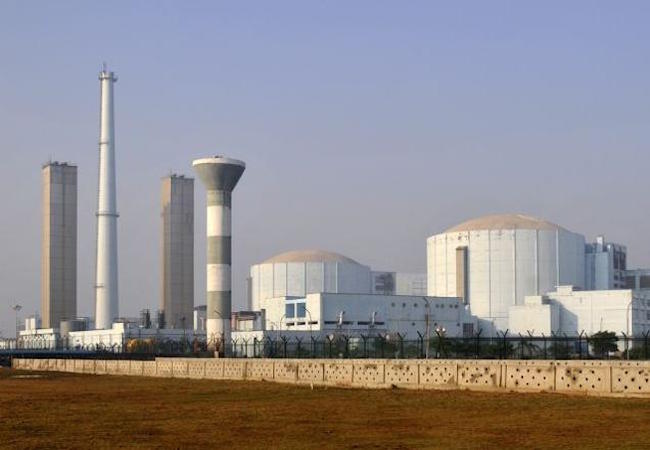
By Usman Ali Khan
Presently, among other Asian states India has the leading role in operating nuclear industry. By 2050, India aims to supply 25% of electricity to its public through nuclear power. As per estimates of 2015, there are 21 operational reactors in India with 6 under construction. Along with that, 16 more have been planned based on India’s international cooperation in this regard with the help of countries like Russia, France, and the U.S.
In their early forays the intention for which India achieved nuclear technology was to utilize it for peaceful purposes but the demonstration in 1974 pictured a totally different scenario.
For years, India fortifies expansion of utilizing nuclear energy for both civilian and military applications. Its early interaction with United States and Canada was the first step through which India built its first large setup of nuclear reactors. The first international cooperation of India in nuclear field with its diplomatic partners came in the name of Tarapur and Rajasthan nuclear power plant.
With substantial increase in its nuclear energy plants over the decades, many reactors and other facilities concomitant with the nuclear fuel cycle, operated by the country’s Department of Atomic Energy (DAE) and its subsidiary organizations, have had accidents of variable severity.
While India bags more than a dozen nuclear deals to dagger millions, it’s not so laudable and imperfect status of nuclear safety and security is the real elephant in the room. The kakrapar incident exposes the omnipotent risk of radiation leaks in Indian facilities yet again. The very risk of nuclear radiation and accidents, commonly occurring of varying severity is due to the skeleton of ailing and security measures it practices on its power plants. This indicates that India operating nuclear power plants has its vices and its continuous failure to tackle the accidents is a huge question mark which will affect the whole region in the future.
There are ample examples where radiation and heavy water leaks in Indian nuclear plants caused a break down in nuclear reactors of India. Apprehensions regarding nuclear power exist in every country where nuclear technology is being used. It is then the way a country learns from other’s experiences and practices every possible approach to safeguard and secure its nuclear power plants. But unfortunately India with abysmal records in disaster management has simply shoved the Fukushima experience under the carpet. It seems that safety norms have been floated just to increase the production of plutonium, where possibility exists for using it to produce weapons, which if not checked could trigger another bomb – a catastrophe.
But wait, there is more, India with an inventory of hazardous incidents, has additionally copious incidents of fire and structural damages in its civilian nuclear power sector and many more which we actually might not know about.
In an article for the Bulletin of the Atomic Scientists (1999), TS Gopi Rethinaraj writes:
The department [of atomic energy] has happily exploited the ignorance of India’s judiciary and political establishment on nuclear issues. In the past, it has even used the Atomic Energy Act to prevent nuclear plant workers from accessing their own health records. While nuclear establishments everywhere have been notorious for suppressing information, nowhere is there an equivalent of India’s Atomic Energy Act in operation. Over the years, in the comfort of secrecy, India’s nuclear establishment has grown into a monolithic and autocratic entity that sets the nuclear agenda of the country and yet remains virtually unaccountable for its actions.
Speaking of which, the absurdity is further demonstrated where it is important to note that not significant measures were taken by both the international community and India for nuclear safety of its Nuclear Power Plants. Even so, they are on the brisk of making more deals with foreign investors which would magnify nuclear power to expand manifold.
Interestingly, Various rules were established under the 1962 Atomic Energy Act starting with the recent: the WMD Act 2005; Atomic Energy (Radiation Protection) Rules, 2004; Atomic Energy (Control of Irradiation of Food) Rules, 1996; Atomic Energy (Factories) Rules, 1996; Atomic Energy (Safe Disposal of Radioactive Wastes) Rules, 1987; and Atomic Energy (Working of Mines, Minerals and Handling of Prescribed Substance) Rules, 1984– all in different ways are yet unable to address safety and security related issues of India’s nuclear programme.
Moreover, since 1949, keeping in mind the regular mishaps that shroud their industry, the idea of nuclear safety and security perception in India is not in line with what the global concerns are for other states around the world. Owing to the past practice of mixing civil and strategic nuclear programs, should not the western powers and U.S. in particular, take note of the fact that India being an enthusiastic participant is currently in the need of adopting stringent measures to strengthen its nuclear safety and security structures.
In retrospect, to ensure stringent safe-keeping, the inimitable nature of its nuclear program necessitates nuclear safety and security in India to be a priority by taking more proactive steps not just on paper.
After all, it prods us to a popular adage: a nuclear accident anywhere is a nuclear accident everywhere.




